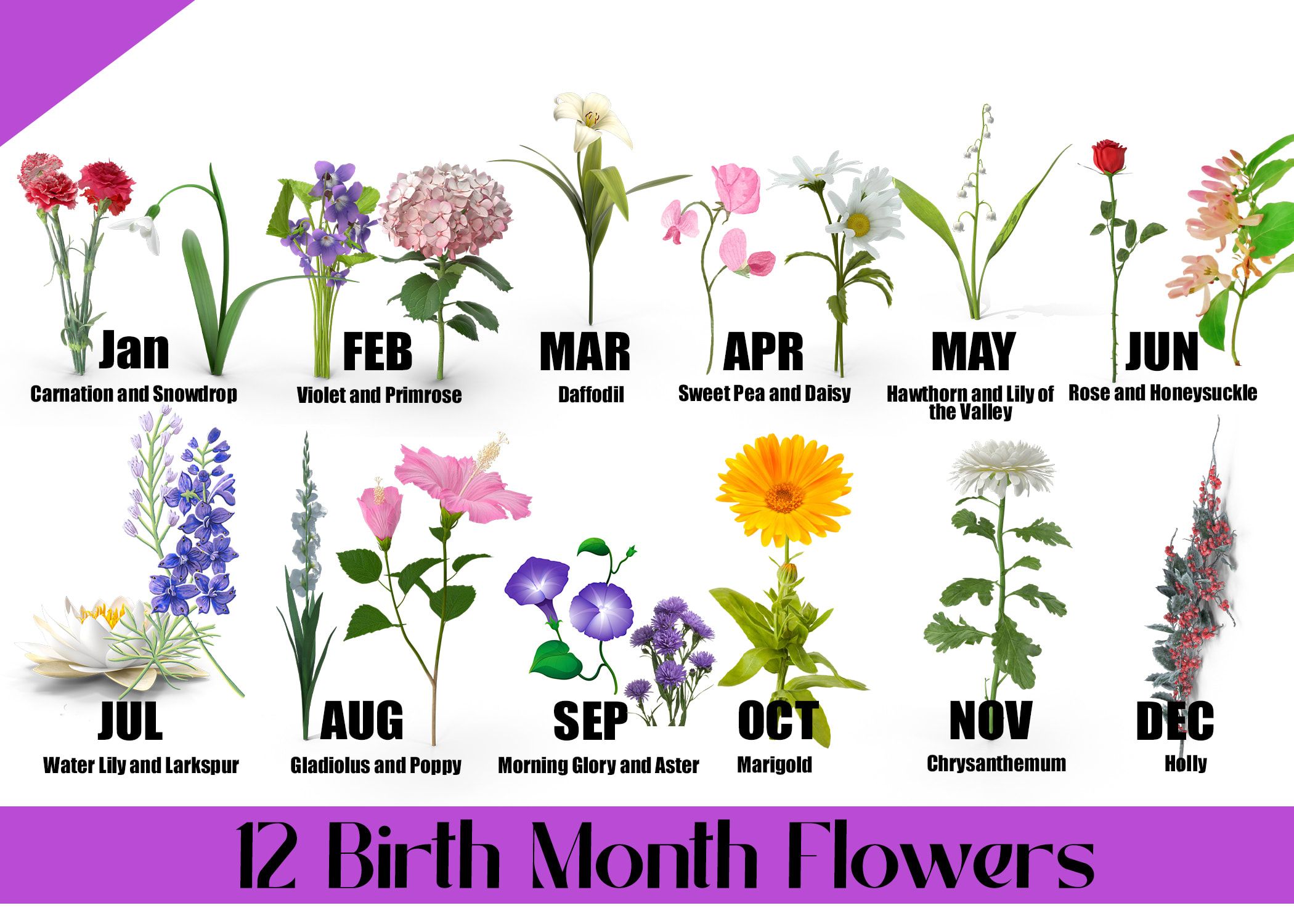
Have you ever considered that just like your birthstone or your zodiac sign, your birth month also has its very own flowers? It’s true! This enchanting tradition, rich in history and vibrant symbolism, adds an extra layer of magic to who you are and the month you were born. For generations, cultures around the world have assigned specific blooms to each month, tying them to the seasons when they flourish and imbuing them with unique meanings that reflect personality traits and life’s beautiful moments.
It’s more than just a pretty flower; it’s a living representation of your unique spirit! Imagine finding a bloom that perfectly captures your essence, a thoughtful detail for birthdays, anniversaries, or even just a little pick-me-up. Our readers have woven these floral inspirations into everything from unique birth month necklaces to stunning tattoo designs and charming family kitchen tiles, proving just how deeply these flowers resonate with us.
What’s even more fascinating is that many months aren’t just blessed with one, but two incredible birth flowers! This delightful duality means you get to pick the bloom that speaks most to your heart, or perhaps embrace both for a fuller picture of your unique self. These primary and secondary flowers offer a nuanced representation, ensuring there’s a bloom that truly resonates with everyone. Get ready to embark on a delightful journey through the first half of the year as we uncover the beauty and profound meanings behind each month’s special blossoms!
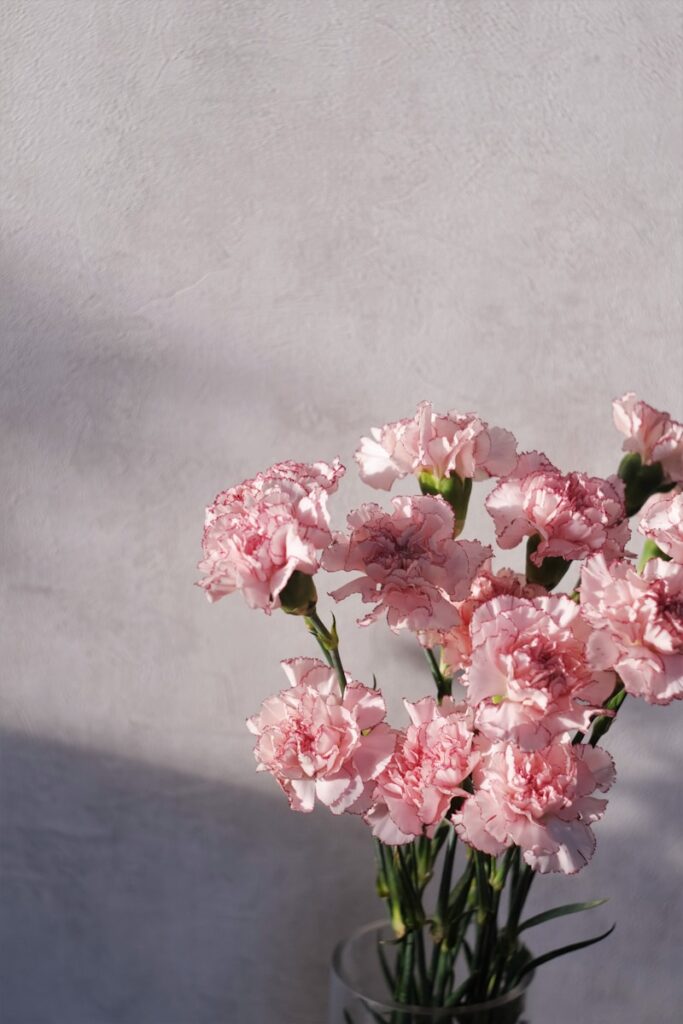
1. **January ~ Carnation & Snowdrop**
January, often a time of fresh starts and new beginnings, is beautifully represented by two captivating flowers: the resilient Carnation and the delicate Snowdrop. These blooms bring color and hope to the chilliest month, each carrying a wealth of symbolism perfect for those born at the year’s outset. They truly embody the spirit of perseverance and deep affection.
The primary January birth flower, the Carnation, scientifically known as Dianthus caryophyllus, is a bouquet staple, injecting color, texture, and cheer. With its ruffled appearance and spicy scent, the carnation commonly symbolizes deep love, affection, and devotion. Each hue carries a unique meaning, from deep reds for admiration to pure whites for good luck and purity. These flowers have captivated people for centuries, dating back over 2,000 years to ancient Greek and Roman times.
Accompanying the vibrant carnation is January’s secondary birth flower, the utterly charming Snowdrop, or Galanthus. Don’t let their small size and dainty-looking petals fool you; these flowers are true fighters. They are often among the very first to bravely push through the snow, announcing spring’s arrival. Snowdrops powerfully symbolize hope, rebirth, resilience, and the purity of new beginnings, a gentle reminder of hope triumphing over despair.
There’s even a beautiful legend: when Adam and Eve were cast out into a harsh winter, an angel transformed snowflakes into snowdrops, giving them vital hope. Remarkably, these magical little flowers produce their own heat, melting snow around them as they grow. This incredible feat allows them to flourish even in the coldest conditions, making them a powerful emblem for anyone born in the heart of winter.
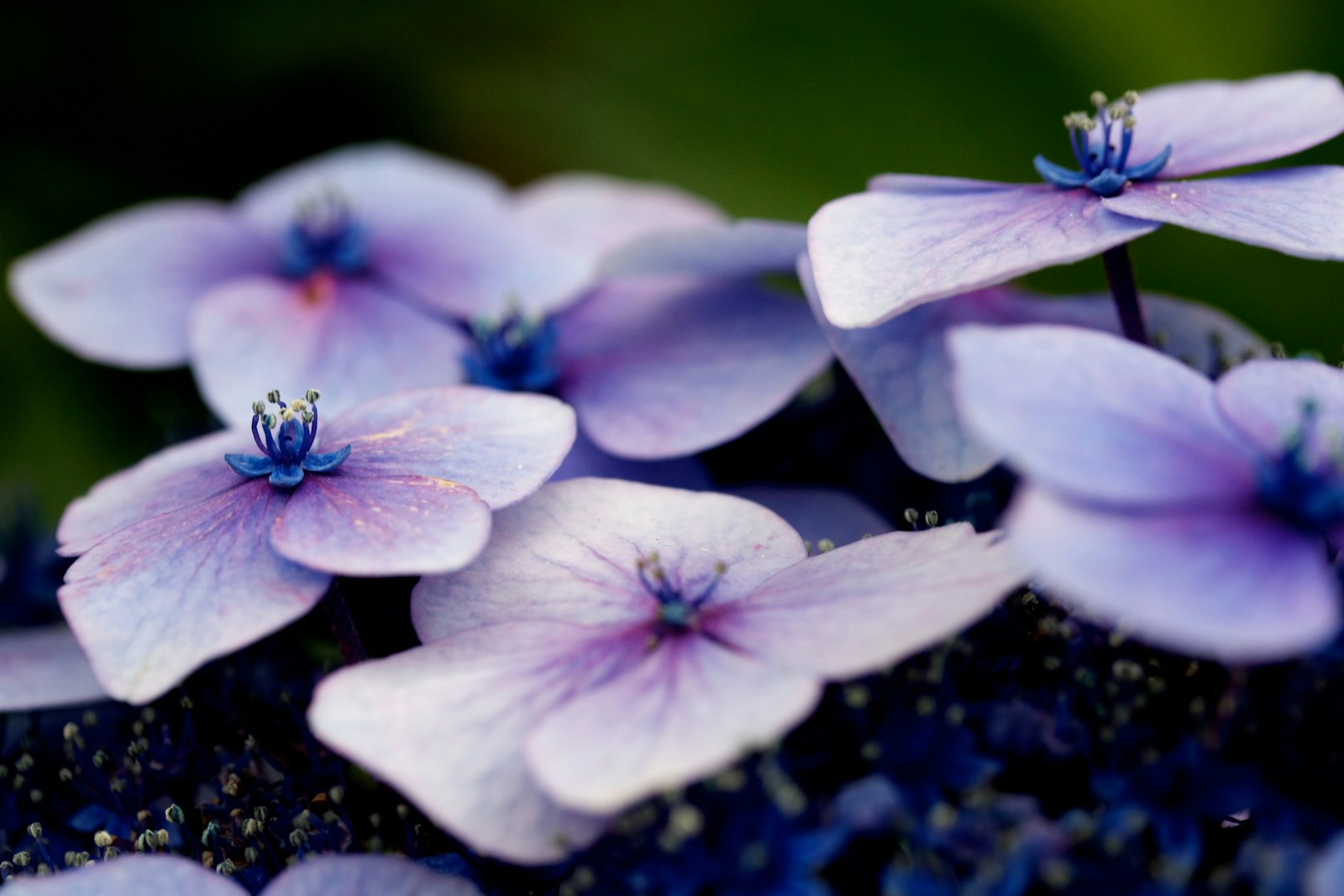
2. **February ~ Violet & Primrose**
February, a month often associated with love and emerging signs of spring, finds its floral representation in the lovely Violet and the cheerful Primrose. These early bloomers bring a burst of color and a gentle promise of warmer days, perfectly reflecting the thoughtful and enduring nature of those born in this transitional period.
The primary February birth flower, the Violet (Viola), is a classic bloom cherished for its vibrant hues, from deep purples to soft blues. These enchanting flowers are powerful symbols of modesty, faithfulness, and spiritual wisdom, qualities often found in those celebrating their birthdays this month. Their rich color and heart-shaped leaves make them beloved favorites in flower beds and wild landscapes.
Violets boast a long, fascinating history, deeply embedded in cultural significance. They have been used in ancient Greek rituals and have inspired countless poets and artists throughout the ages, cementing their place as a flower of quiet elegance. Known for their delicate fragrance, violets bravely bloom early in spring, showcasing their hardiness. Beyond their aesthetic appeal, violets have also been utilized for medicinal properties and are remarkably edible, adding beauty and a unique flavor to culinary creations.
Serving as February’s secondary birth flower, the Primrose (Primula) is a delightful harbinger of spring, appearing in a spectrum of vibrant colors, each with five petals and a cheerful yellow center. These small yet resilient flowers symbolize youth, renewal, and the eternal nature of love. They are truly at home in the wild, brightening up gardens and woodlands with their charming presence.
As another early-blooming flower, primroses have what it takes to withstand cold temperatures, making them a fitting symbol for those born in February who often possess remarkable inner strength. In folklore, primroses are even believed to be sacred to fairies, often depicted in mythical tales as a magical key to their hidden realms. These charming plants bring a profound sense of joy and renewal, much like the promise of spring itself.

3. **March ~ Daffodil & Jonquil**
As winter truly gives way to the vibrant awakening of spring, March is joyfully heralded by the iconic Daffodil and its fragrant cousin, the Jonquil. These bright, cheerful blooms are perfect symbols for new beginnings and the optimism that comes with warmer days, embodying the energetic spirit of March babies.
The Daffodil, scientifically known as Narcissus, is March’s primary birth flower and is widely regarded as a beacon of rebirth and joy. As one of the very first flowers to burst forth in spring, its bright yellow blooms act like little suns, scattering hope and telling us that winter’s chill is finally retreating. Their six petals, long center trumpet, and unmistakable bright yellow color greet us, assuring us that warm, sunny days are just ahead.
These good-news flowers carry rich cultural meanings. They symbolize unrequited love in Greek mythology’s tale of Narcissus, and good fortune and prosperity in various traditions. Their powerful visual presence and early arrival make them a truly auspicious and uplifting flower, embodying the fresh starts that March so often brings to our lives and landscapes.
Accompanying the daffodil is the Jonquil, March’s secondary birth flower, which hails from the same beloved Narcissus family. Jonquils share many of the same positive symbolism and characteristics as daffodils, but distinguish themselves with their smaller stature, incredibly sweet and strong fragrance, and a slightly shorter trumpet. They are a specific type of daffodil, often referred to synonymously.
These charming flowers are a popular choice for gardens and floral arrangements due to their delightful aroma, favored in perfumery for centuries. Jonquils beautifully symbolize desire, affection, and the heartfelt return of happiness, making them a fitting tribute to the uplifting spirit of March. They represent the perfect balance of beauty and grace, resilience and strength, echoing the positive qualities of individuals born in this wonderfully transitional month.
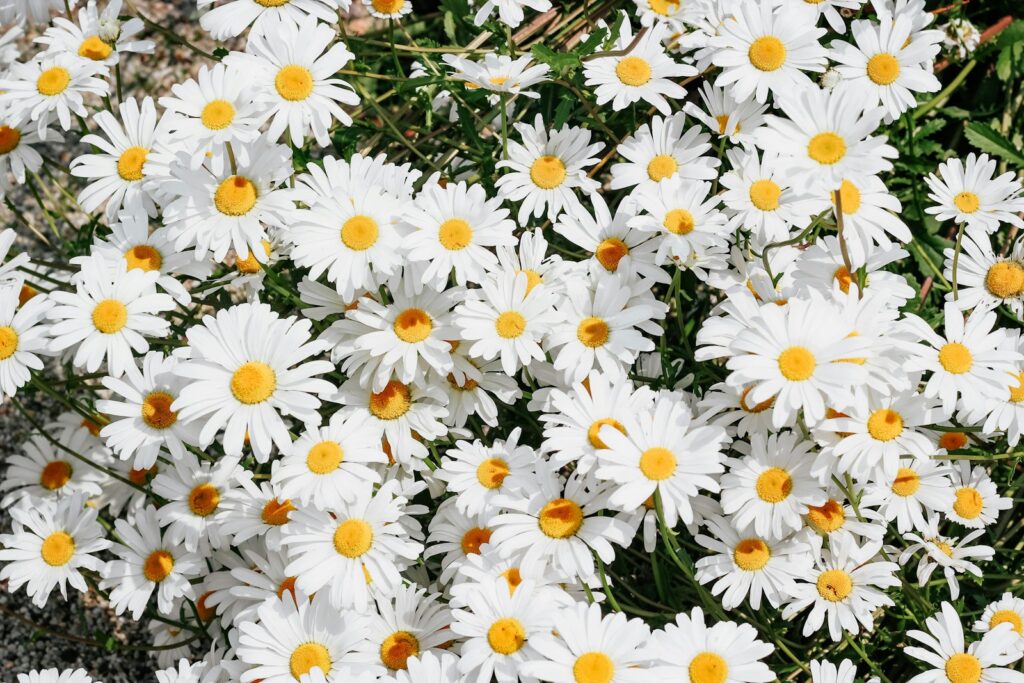
4. **April ~ Daisy & Sweet Pea**
April, a month synonymous with fresh growth and blossoming beauty, is gracefully represented by the classic Daisy and the charming Sweet Pea. These flowers perfectly capture the innocent wonder and gentle kindness associated with those who celebrate their birthdays amidst April showers, embodying springtime’s tender awakening.
The primary April birth flower, the Daisy, is a truly delightful classic, bounding into spring with an infectious energy and unadulterated joy. With its simple yet striking beauty, typically featuring long white petals encircling a sunny yellow center, the daisy is a universal symbol of purity, innocence, and loyal love. You can practically hear children’s laughter when you gaze upon them, reflecting their cheerful demeanor and simple charm.
Daisies are remarkably versatile and resilient, often found in a variety of habitats around the world, showcasing their adaptable nature. Their daily ritual of opening their petals to greet the sun each morning makes them a constant, beautiful reminder of hope and new beginnings. Beyond their aesthetic appeal, these “pretty faces” have historically been valued for their medicinal properties, particularly in traditional herbal remedies.
Joining the daisy as April’s secondary birth flower is the Sweet Pea, scientifically known as Lathyrus odoratus. These extraordinarily fragrant climbing flowers are an absolute delight to the senses, boasting delicate blooms and a captivating sweet scent. Sweet peas come in a charming range of soft and vibrant colors, making them an exquisite choice for both gardens and floral arrangements.
They beautifully symbolize blissful pleasure, deep gratitude, and affectionate farewells, making them a flower with profound emotional depth. In the timeless language of flowers, sweet peas are often used to convey appreciation and tender goodbyes. Their inherent climbing nature, reaching impressive heights before blooming profusely, makes them a spectacular and endearing sight in any setting, with a rich history of cultivation since the 17th century.
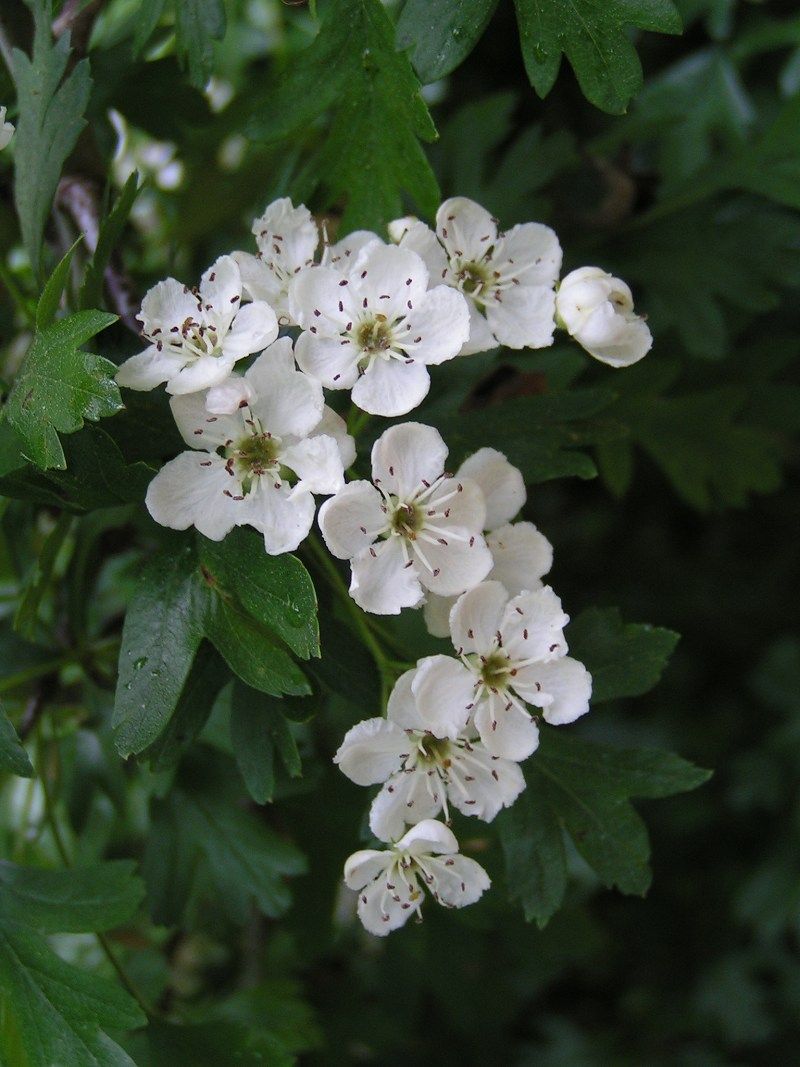
5. **May ~ Lily of the Valley & Hawthorn**
May, a month celebrated for its lush greenery and the vibrant flourishing of nature, finds its exquisite floral companions in the delicate Lily of the Valley and the resilient Hawthorn. These blooms perfectly encapsulate the joy, humility, and enduring spirit of those born in the heart of spring, bringing a sense of enchantment and deep happiness.
The primary May birth flower, the Lily of the Valley, scientifically known as Convallaria majalis, is a truly captivating and highly fragrant bloom. This delicate flower, with its small, bell-shaped white blossoms, is a powerful symbol of sweetness, humility, and the joyful return of happiness. Often found nestled among its broad green leaves in cool woodland habitats, its enchanting presence is unmistakable.
This flower has a rich cultural history, celebrated in various traditions. In some cultures, it is revered as a lucky charm and is frequently exchanged as a cherished gift on May Day, embodying renewal and hope. Beyond its undeniable beauty, this enchanting flower has also been valued and utilized in traditional medicine for its therapeutic properties, showcasing its versatile nature and timeless appeal.
Serving as May’s secondary birth flower, the Hawthorn, a genus known as Crataegus, is a sturdy shrub or small tree that graces the landscape with lovely white or pink flowers in spring, then gives way to festive red berries in the fall. The Hawthorn is a profound symbol of hope and supreme happiness, perfectly embodying the optimism and deep joy that May brings.
This robust plant has been a cornerstone in various cultures for centuries, not only for its beauty but also for its significant medicinal properties, particularly noted for heart-related conditions. Its ability to add beauty to an otherwise harsh plant makes it a perfect flower for a resilient May baby, symbolizing sturdiness and love. The Hawthorn is deeply steeped in folklore and ancient magic, often associated with faeries, and its flowers and berries add beauty and provide sustenance for wildlife.
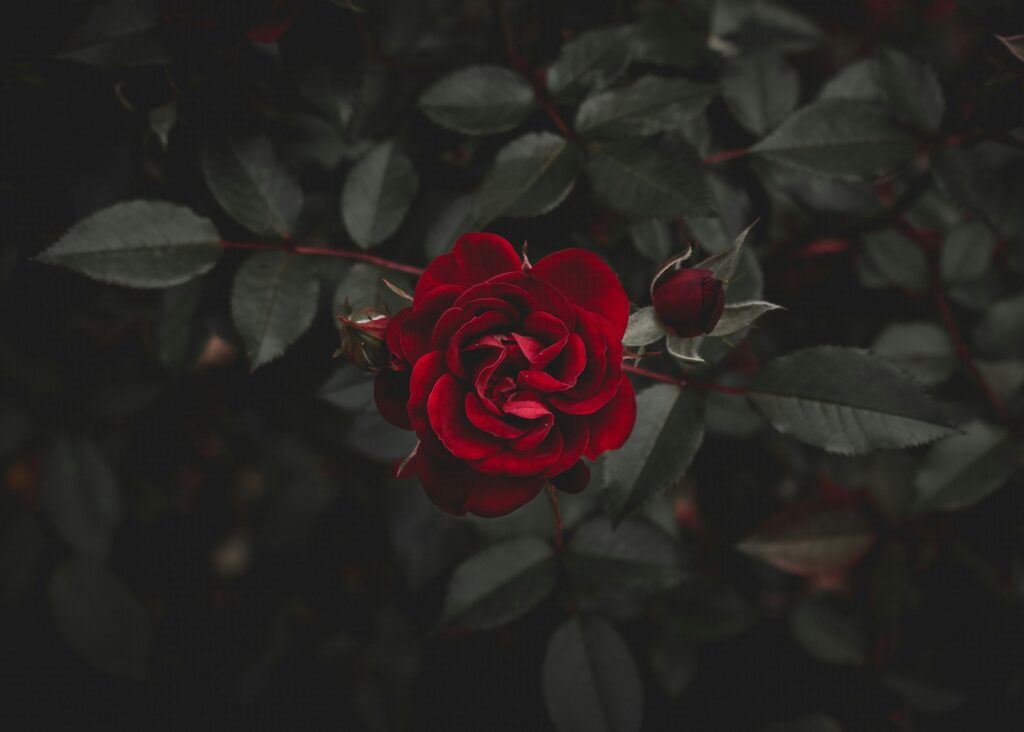
6. **June ~ Rose & Honeysuckle**
June, the quintessential month of summer, bursting with warmth and long, sun-drenched days, is perfectly embodied by two profoundly romantic and joyous flowers: the universally adored Rose and the sweetly intoxicating Honeysuckle. These blooms speak volumes about love, passion, and enduring connections, reflecting the vibrant and affectionate nature of June babies.
The primary June birth flower, the Rose, known scientifically as Rosa spp., is unequivocally recognized as the ultimate symbol of love, passion, and beauty across cultures worldwide. With its utterly captivating fragrance and exquisite, layered petals, the rose has been cherished for centuries, holding a revered place in art, literature, and human expression. It’s tenacious and beautiful juxtaposition invites you closer, but only if you’re careful to avoid its thorny stems.
Each of its magnificent colors carries a distinct meaning – from the deep, fiery reds that symbolize intense love and desire, to the pure, pristine whites representing innocence and purity. Roses thrive in warm weather, making their widespread popularity and timeless appeal truly unparalleled in gardens, floral arrangements, and as a potent means of conveying profound emotions. They also beautifully represent friendship, profound joy, and heartfelt appreciation.
Accompanying the regal rose as June’s secondary birth flower is the enchanting Honeysuckle, belonging to the genus Lonicera. These wonderfully fragrant flowers are celebrated for their distinctive sweet scent and unique tubular shape, making them an irresistible magnet for hummingbirds and butterflies gracing gardens. Honeysuckle powerfully symbolizes the enduring bonds of love and the sweet, unbreakable connections shared between people.
These remarkable flowers are not only strikingly beautiful but also possess a rich history in folklore and traditional herbal medicine. Often found gracefully climbing and twining over structures and other plants in woodlands, hedgerows, and gardens, they add a touch of natural elegance and charm to any landscape. The intoxicating fragrance of honeysuckle on a balmy summer evening is an absolute sensory delight, effortlessly evoking cherished memories and warm emotions tied to the blissful joys of early summer.
Ready to keep blooming? As we journey through the captivating world of birth month flowers, it’s truly incredible to see how each bloom, with its distinct charm and powerful symbolism, can reflect a piece of who you are. Whether you’re a summer sun-lover or a winter wonder, there’s a floral friend waiting to celebrate your unique spirit. Let’s dive into the vibrant second half of the year, uncovering even more beautiful meanings and how these blossoms can add a touch of magic to your life, from thoughtful gifts to personal touches around your home!

7. **July ~ Larkspur & Water Lily**
As summer hits its glorious peak, July brings with it the majestic Larkspur and the serene Water Lily, a perfect pairing for those born in this sunny, vibrant month. These flowers beautifully encapsulate the warmth, love, and lively energy that defines mid-summer, offering a splash of color and calm to anyone celebrating their special day. They truly reflect a spirit of openness and deep affection.
The Larkspur, known scientifically as Delphinium, stands proudly as July’s primary birth flower. These tall, elegant plants with their spiky blooms are renowned for their vibrant colors, which range from friendly blues and purples to playful pinks and pristine whites. Each hue tells a story, but collectively, larkspurs symbolize lightness, levity, and strong bonds of love, perfectly mirroring the carefree and deeply affectionate nature often found in July-born individuals. They truly make a statement in any garden or bouquet, inviting joy and connection.
Beyond their stunning appearance, larkspurs have a rich history woven into folklore and traditional herbal medicine, making them more than just a pretty face. Their impressive height makes them a natural focal point in gardens, drawing the eye and adding a touch of drama and elegance. Imagine incorporating these beautiful blooms into a summer birthday celebration—perhaps a stunning centerpiece or a thoughtful gift—to truly capture the essence of a July baby’s vibrant and loving personality, brimming with positivity.
Joining the larkspur is July’s secondary birth flower, the exquisite Water Lily, belonging to the family Nymphaeaceae. These aquatic marvels are celebrated for their large, round, floating leaves and breathtakingly fragrant flowers that seem to float effortlessly on the surface of ponds and lakes. Water lilies are profound symbols of purity, enlightenment, and rebirth, embodying the spiritual growth and renewal that can occur during this introspective time of year.
Available in a spectrum of colors, including serene white, soft pink, cheerful yellow, and passionate red, water lilies are cherished not just for their beauty but also for their vital role in aquatic ecosystems, providing shade and oxygen. Their history stretches back to ancient civilizations like Egypt and China, where they were revered for their spiritual significance. Incorporating water lilies into a space, even through imagery or art, can bring a sense of calm and reflection, making them a meaningful choice for those who value peace and spiritual depth.
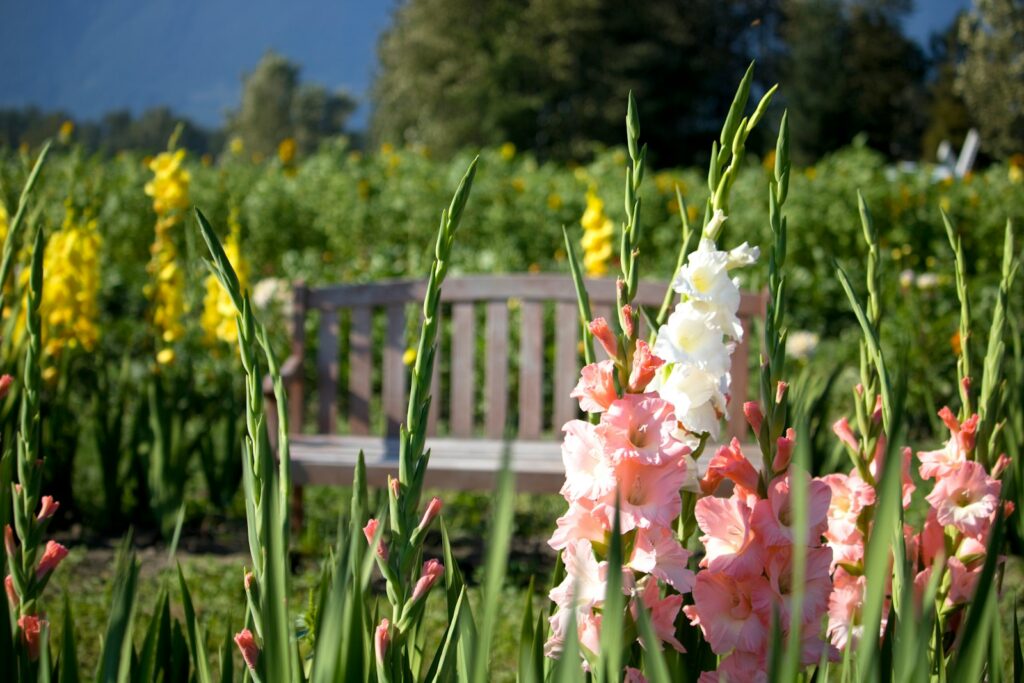
8. **August ~ Gladiolus & Poppy**
As summer gently transitions towards its close, August brings forth two magnificent blooms that truly capture the fiery spirit and deep introspection of the month: the commanding Gladiolus and the expressive Poppy. These flowers are a vibrant testament to strength, integrity, and a touch of creative flair, making them perfect emblems for those celebrating their birthdays as the days subtly begin to shorten.
The Gladiolus, proudly known as the sword lily, reigns as August’s primary birth flower. Its name, derived from the Latin word ‘gladius’ meaning sword, perfectly describes its striking tall spikes and wide array of vibrant colors. These flowers are powerful symbols of strength of character, integrity, and even infatuation. Imagine a gladiolus standing tall in a bouquet—it truly commands attention, much like the confident and strong individuals born in August.
Beyond their impressive stature, gladiolus flowers also gracefully symbolize remembrance and calmness, offering a beautiful paradox of power and peace. They are a popular choice in floral arrangements for their dramatic appearance and ability to add an intense splash of color. For an August birthday, a gift featuring gladioli can convey profound respect and admiration for their inner strength and unwavering spirit, celebrating their unique journey with vibrancy.
Serving as August’s secondary birth flower, the Poppy is a vibrant and truly eye-catching bloom. Known for its bright and bold colors, especially the iconic red poppy, which holds powerful symbolism of remembrance and respect, poppies embody imagination, dreams, and a peaceful, eternal sleep. Their delicate petals and striking black centers make them demand attention in any setting.
Poppies boast a long and fascinating history, often associated with themes of sleep and peace, partly due to their historical use in producing opium. Beyond this, they are simply admired for their raw beauty, gracing gardens and wildflower meadows with their unpretentious charm. Their powerful-looking presence and striking colors make them an incredible choice for celebrating an August baby who possesses a deep well of imagination and a resilient spirit, bravely showcasing their unique beauty.
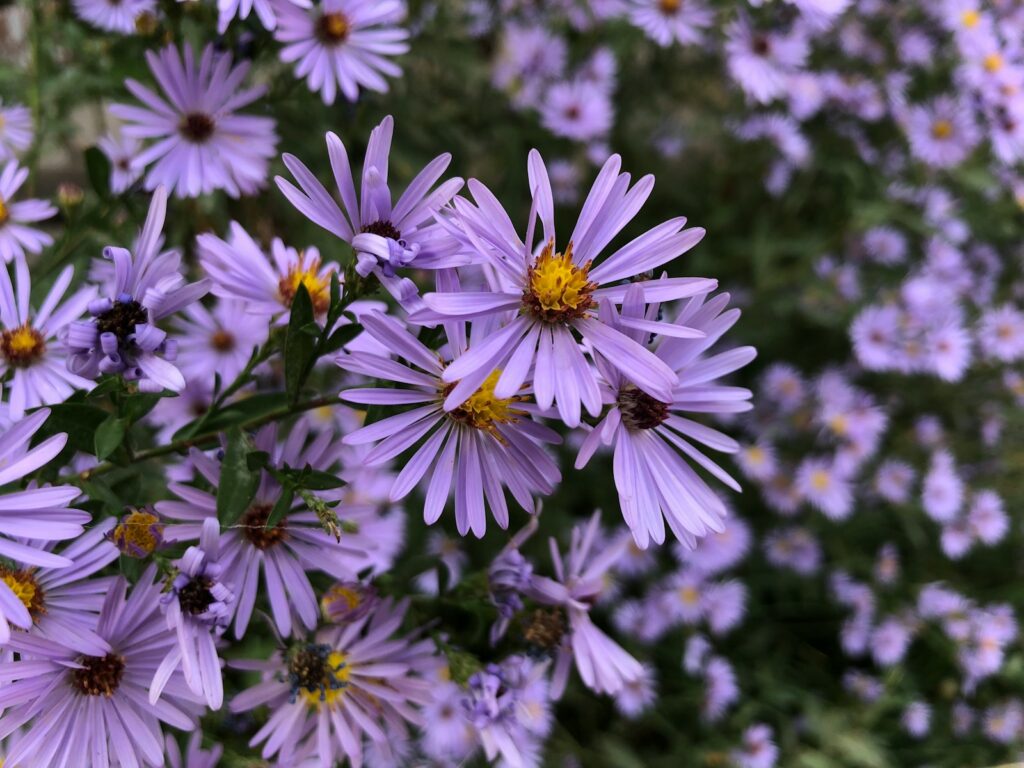
9. **September ~ Aster & Morning Glory**
As the crisp air of autumn begins to whisper, September embraces us with the star-shaped Aster and the charming Morning Glory, perfect companions for the thoughtful and wise souls born during this beautiful transitional month. These flowers are a gentle nod to wisdom, valor, and enduring affection, mirroring the serene beauty of the changing seasons.
Asters, with their delightful star-shaped flowers, shine brightly as September’s primary birth flower. Available in a charming spectrum of colors, including serene blue, regal purple, pure white, and gentle pink, asters symbolize wisdom, valor, and faith. Their name, stemming from the Greek word for ‘star,’ perfectly captures their celestial appearance, making them a fitting tribute to the beginning of the autumn season and the intellectual depth of September-born individuals.
These lovely daisy-like flowers are not only admired for their beauty but also play a vital role in our ecosystem, gracefully attracting busy bees and fluttering butterflies. They have also found their place in folklore and traditional herbal medicine, adding to their mystical allure. For someone born in September, a bouquet of asters can be a heartfelt way to acknowledge their profound wisdom and unwavering faith, celebrating their unique qualities with natural elegance.
Joining the aster as September’s secondary birth flower is the beautiful Morning Glory, celebrated for its exquisite, trumpet-shaped blooms. As their name suggests, these flowers typically unfurl their delicate petals in the early morning light, offering a fresh burst of color to start the day. Morning Glories are powerful symbols of affection and, sometimes, unrequited love, adding a layer of romantic depth to their meaning.
These enchanting flowers come in various shades, including soothing blue, vibrant purple, soft pink, and crisp white. As natural climbers, they are often seen gracefully adorning fences, trellises, and walls, adding a vibrant splash of color and natural charm to any garden. With a rich history across various cultures, Morning Glories symbolize the fleeting yet beautiful nature of love and the preciousness of life itself. They’re a wonderful way to honor the steadfast and resilient spirit of those born in this reflective month.
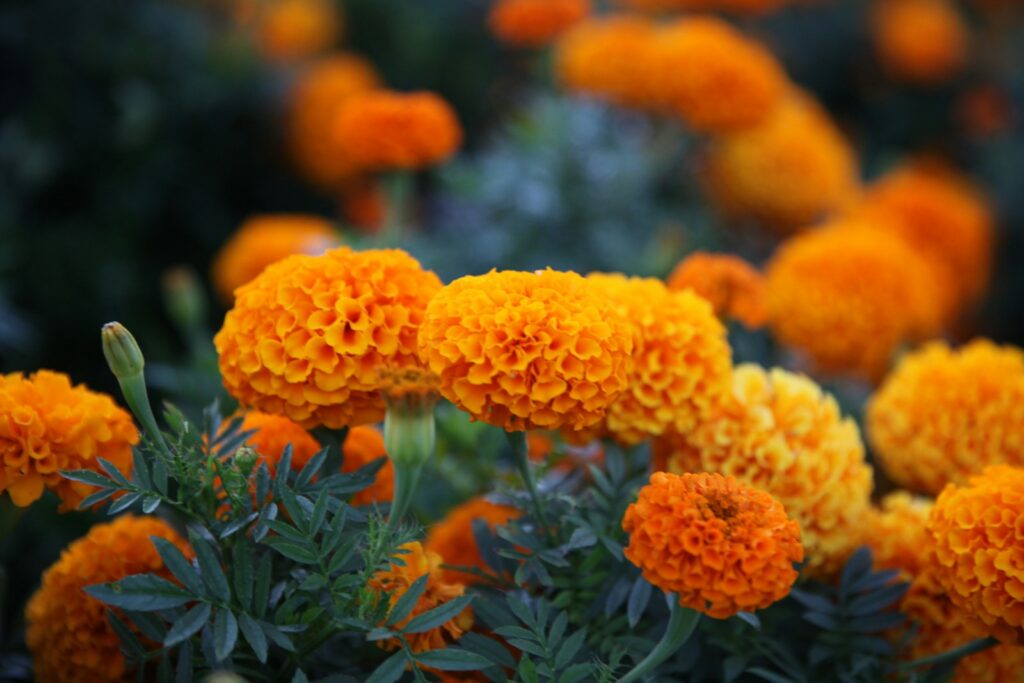
10. **October ~ Marigold & Cosmos**
As the world dresses in its most vibrant autumnal hues, October brings forth the radiant Marigold and the harmonious Cosmos, an utterly delightful duo for those celebrating their birthdays amidst fall festivals and cozy evenings. These flowers are a celebration of creativity, passion, harmony, and the joyful beauty of the season, reflecting the warm and balanced nature of October babies.
Marigolds, known scientifically as Tagetes, explode onto the scene as October’s primary birth flower. These truly vibrant and colorful blooms are instantly recognizable by their rich orange and yellow hues, which perfectly complement the golden palette of autumn. Marigolds powerfully symbolize creativity, passion, and the life-giving beauty of the sun. They are often associated with positive emotions and hold a special place in various cultural celebrations around the world, including the spirited Day of the Dead in Mexico.
Beyond their undeniable beauty, marigolds are incredibly versatile! They’re not just pretty faces; they’re also valued for their medicinal properties and serve as a natural insect repellent in gardens, making them a gardener’s best friend. Their bold colors and distinctive, pungent fragrance make them an unmistakable and cherished addition to any floral arrangement or garden display. Gifting marigolds to an October-born friend is like sending a warm, creative hug, acknowledging their vibrant spirit and sunny disposition.
Accompanying the marigold as October’s secondary birth flower is the graceful Cosmos. These delicate, daisy-like flowers are a vision of simplicity and elegance, blooming in a charming array of colors, including soft pink, pristine white, and gentle purple. Cosmos beautifully symbolize harmony, order, and peace, making them an ideal match for the calm and balanced energy often found in those born in October.
Cosmos flowers are a gardener’s delight, known for being incredibly easy to grow and maintain, adding a touch of effortless beauty to any outdoor space. They have a whimsical quality, swaying gently in the breeze, which adds an undeniable touch of grace and charm to any setting. These lovely blooms are not just ornamental; they have also been cherished in traditional medicine for their soothing properties. A bouquet of cosmos is a thoughtful gesture, embodying the serene and harmonious nature of an October-born individual.
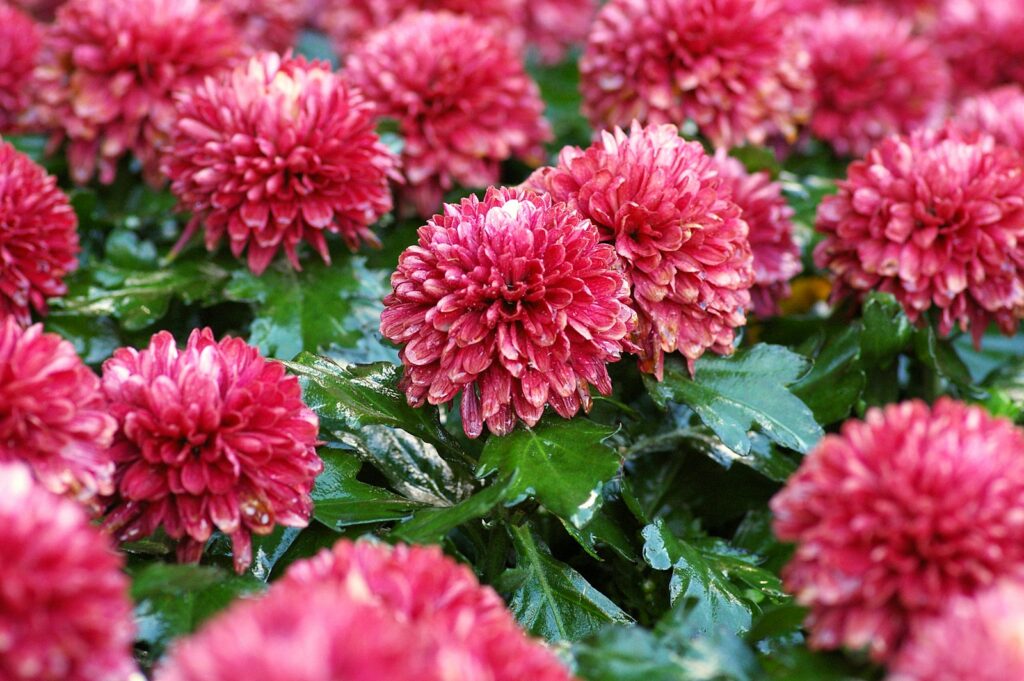
11. **November ~ Chrysanthemum & Peony**
As the days grow shorter and the air turns crisp, November unveils two remarkable floral treasures: the resilient Chrysanthemum and the opulent Peony. These stunning blooms are a vibrant testament to optimism, joy, romance, and prosperity, perfectly encapsulating the enduring spirit and deep affections of those celebrating their birthdays as autumn gracefully transitions into winter.
Chrysanthemums, affectionately known as ‘mums,’ stand as November’s primary birth flower. These incredibly popular flowers are celebrated for their vibrant colors and diverse forms, making them a true showstopper in late-autumn gardens. Chrysanthemums symbolize optimism, joy, and longevity, bringing a welcome burst of color to the waning days of the year. They are a staple in fall floral arrangements, a cheerful reminder that beauty endures even as the weather cools.
In many cultures, chrysanthemums hold significant and revered meanings. In Japan, they are a powerful symbol of the Emperor and the Imperial family, while in China, they represent nobility and elegance, showcasing their widespread admiration. Beyond their aesthetic appeal, chrysanthemums also possess medicinal properties, often used in comforting teas and traditional remedies. A gift of chrysanthemums can truly brighten a November birthday, symbolizing lasting happiness and a positive outlook.
Gracing November as its secondary birth flower is the magnificent Peony, renowned for its lush, full blooms. These universally beloved flowers are cherished for their captivating beauty and exquisite fragrance, available in a rich palette of shades including romantic pink, fiery red, pure white, and sunny yellow. Peonies are powerful symbols of romance, prosperity, and good fortune, making them a popular choice for weddings and celebrations as a sign of honor and wealth.
The peony holds a special place in folklore and ancient myths, often associated with tales of romance and even bashfulness, adding to its timeless allure. Much like chrysanthemums, peonies are not just ornamental; they have also been valued in traditional medicine for their therapeutic properties. These extraordinary flowers add an undeniable touch of elegance and charm to any setting, making them a cherished favorite among both gardeners and floral enthusiasts alike, embodying the richness of love and abundance.
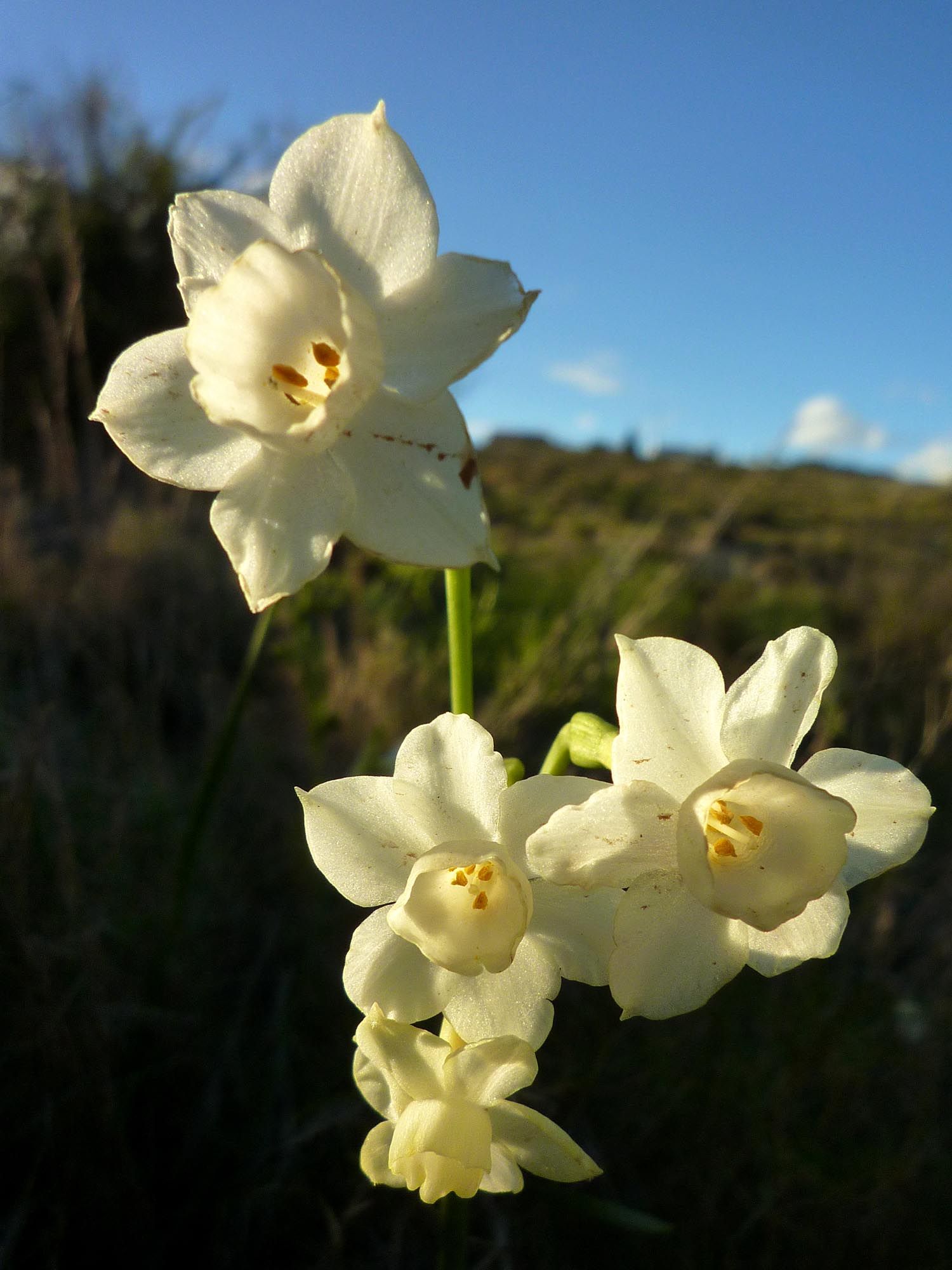
12. **December ~ Narcissus & Holly**
As the year draws to a celebratory close and the festive season twinkles, December brings forth two iconic symbols of hope, renewal, and enduring spirit: the radiant Narcissus and the festive Holly. These unique emblems perfectly capture the warmth, resilience, and joyful anticipation characteristic of those born in the heart of winter, bringing light and cheer to the darkest days.
The Narcissus, most commonly recognized as the elegant daffodil or its delicate cousin, the paperwhite narcissus, stands as December’s primary birth flower. These resilient flowers are instantly identifiable by their striking trumpet-shaped center, surrounded by elegant petal-like tepals, typically in pure white, cheerful yellow, or warm orange hues. Narcissus powerfully symbolizes hope, rebirth, and the triumph of the future over the past, making it a perfect messenger of renewal and new beginnings, especially as the new year approaches.
This flower is deeply intertwined with the promise of spring’s arrival, even in the midst of winter, offering a bright beacon of what’s to come. Narcissus boasts a rich history, frequently appearing in art, literature, and mythology, adding layers of depth to its beautiful meaning. For a December baby, a gift of narcissus can be a profound way to celebrate their inherent optimism and capacity for fresh starts, blooming brightly even in challenging times.
Serving as December’s secondary birth flower, the beloved Holly, with its distinctive glossy green leaves and vibrant red berries, is not technically a flower but an incredibly jolly plant pairing for your December baby! Holly is a powerful symbol of foresight and protection, making it a fitting emblem for this time of year when thoughts turn to reflection and planning for the future. Its association with Christmas and the broader winter season brings an undeniable festive spirit to the colder months.
The bright red berries and evergreen leaves of the holly plant embody enduring life and unwavering optimism, even in the face of winter’s chill. Holly reminds us of the joy and beauty that can be found even in the coldest and darkest times of the year, providing a resilient spark of hope and celebration. It’s a wonderful symbol for those born in December, reflecting their ability to bring warmth, peace, and protection to those around them.
And there you have it, a dazzling deep dive into the enchanting world of birth month flowers! From the resilient snowdrop to the protective holly, each bloom tells a unique story, reflecting the characteristics and spirit of those born under its watchful petals. Whether you’re searching for a heartfelt gift, a meaningful tattoo design, or just a little botanical inspiration to connect with your own essence, these flowers offer a truly beautiful way to celebrate identity and the joyous rhythms of the year. So, which bloom calls to your heart? Embrace its meaning, and let your birth flower be a vibrant reminder of your amazing, blooming self!



